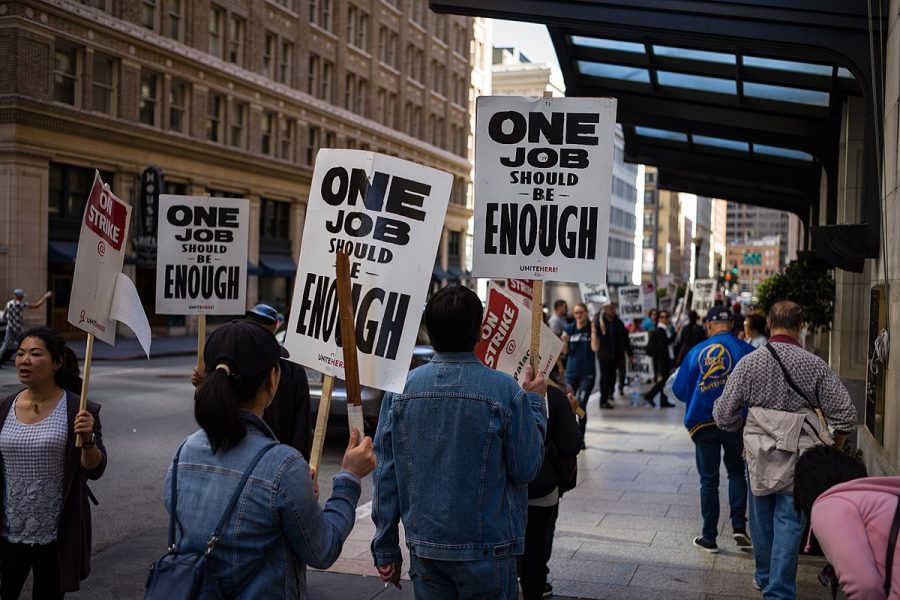Much has been made recently about “going green,” the process by which environmental technologies are put at the forefront of economic development and city planning.
Here at CSU East Bay, university officials are touting the construction of a new $7 million solar energy plant as part of its ongoing commitment to utilize solar power wherever possible.
Although everyone involved is hoping to help the environment, the short-term benefits of green technology are what seem most appealing. Building and developing a new industry means new jobs and opportunities.
The promise of creating a new industry that will alleviate the high national and local unemployment rates is what has everyone from President Barack Obama to Oakland community organizers heralding green technologies as the wave of the future.
In 2009, the American Recovery and Reinvestment Act, otherwise known as Obama’s stimulus plan, allocated $4.5 billion directly to the development of green technologies along with over $50 billion to other environmental causes. These funds have since trickled down to the local level and have begun to show tangible results.
The Oakland Green Jobs Corps is currently training and graduating candidates who are finding employment with local companies which include the likes of SolarCity, Sunlight & Power, and Borrego Solar, to name a few.
“The success of this program has transformed lives,” said Caz Pereira, the director of Growth Sectors Inc., who has worked in conjunction with Laney College and the Ella Baker Center to develop the training program. “We’ve seen transitions in a lot of students. They are very, very confident.”
Some have worried that government subsidies of green technology may be wasteful and only further act to drive up the deficit. There have also been cases such as what happened in August, where the Michigan-based Energy Conversion Devices, Inc. relocated its solar cell plant from Auburn Hills to Tijuana.
This led President Obama to bemoan that green jobs are “the jobs of the future, jobs that pay well and can’t be outsourced.”
Unfortunately, these jobs can easily be outsourced, and they are, to Mexico, China and India in high numbers. According to the Brown-Wilson Group, 22,000 green jobs had already been outsourced to India going back to 2009 alone. Many of these companies have also been the recipients of the federal stimulus money.
There seems to be nothing that can be done to stop this phenomenon. When asked what the government will do to stop government bailouts from being used by companies who are outsourcing, Dan Tangherlini, an assistant secretary at the Department of Treasury, could only answer, “There are no restrictions on the use of the funds.”
However, the focus on green technologies has caused a grassroots movement in low income areas around the Bay Area to rethink ways of urban development.
In the unincorporated community of Marin City, Marin County has recently built a Health and Wellness Center that is retrofitted with solar panels and weatherization to serve its disproportionally high number of residents with low incomes. It might be seen that this recourse would never have been built if it were not for the emphasis on implementing green technologies.
Marin County Supervisor Charles McGlashan believes that the Marin City Health and Wellness Center, “provides a model of how a very cost effective micro-resource like this could help us transition away from big centralized utilities and hospitals and go to a more community-based infrastructure that people will thrive in.”
It is this possibility of killing two collective birds with one stone that have politicians seeing environmentalism as a way to provide affordable services to their communities.
In East Oakland, residents are turning abandoned industrial areas into “green zones” which have become havens for environmental redevelopment within the inner city neighborhoods.
These sites include the East Oakland Boxing Association’s Rainwater Catchment System, which uses rainwater to support a lavish garden that surrounds its facilities on 98th Avenue.
Like anything in our free market capitalist economy, action will not be brought about until the monetary assessment is beneficial enough. Therefore, politicians and business interests will have to see green before they can fully commit to going green. As the great Randy Moss once said, “straight cash, homie.”
For now, there is no shortage of applicants for the Oakland Green Job Corps, who represent just a small fraction of 14.9 million unemployed Americans.










